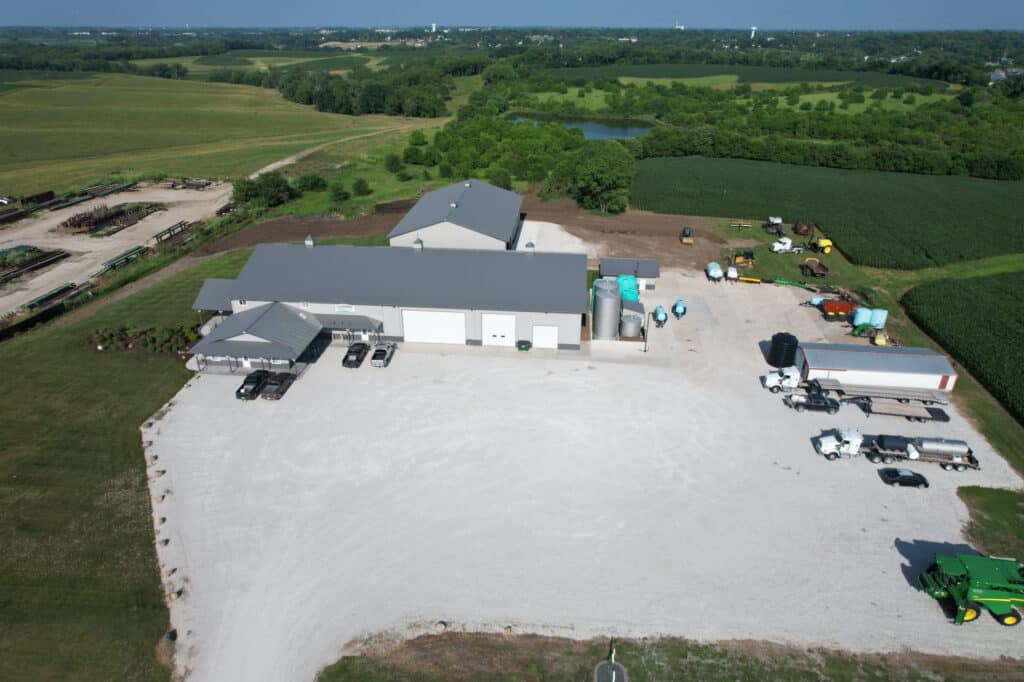Tailoring a Crop Nutrition Plan to Your Needs
Blake Reynolds, Reynolds Ag Solutions
There’s so much to learn from the success of fellow growers, but no plan works for everyone. Blake Reynolds, owner of Reynolds Ag Solutions, is a Precision Planting Premier Dealer who coordinates the daily operations and leads the sales team. He shared his tips on how to view your own operation through the lens of soil data and tailor your crop nutrition plan to your fields’ precise needs.
The grass is always greener…
How do you evaluate a farming practice from a neighboring farm?
Reynolds emphasizes the importance of looking at the big picture – including multi-year data – when implementing new farming practices. He cites variation between labs as one challenge to finding the consistency necessary to predict whether a practice will have the ROI he is looking for.
“If there’s a variation between labs – even if you’re consistently using the same lab – is that data correct?” Reynolds said. “Is it the high, low, or average? That’s why soil testing over a five-year timeframe gives you proof.”
Reynolds reminds growers that the effectiveness of on-farm research also depends on their approach. Even if you test on a 300-foot strip or side-by-side, he says, you’re still getting one-year data. He believes in bringing the entire picture together from an operational standpoint.
“We take a management system, figure out a way it works for us, and move forward year by year,” he said.
Reynolds cautions against only looking for quick returns, emphasizing the need for a thoughtful approach to crop management.
“If we’re always looking for the next quick ROI or easy dollar – that’s generally the next easy dollar to be lost,” he said. “You can’t always be chasing the next best thing. You also have to have consistency to go with it.”
On-farm research
For Reynolds, on-farm research is another tool in the toolbox. In his sales territory, he sees consistent patterns with the majority of their soils – low pH, high magnesium, and a low base saturation of potassium.
“From an operational standpoint, we can’t take the time to keep testing all of these different products, so we have to go back to our tools and figure out who we want to trust as our advisor,” he said. “We start fine-tuning and tweaking methodologies, product lineups, and different rates.”
From this base starting point, Reynolds can build a foundation.
“You have to have a strong foundation to build the house on top,” he said. “When I put a farmer hat on and use my farmer ingenuity, I ask, ‘What makes sense?’”
For instance, Reynolds overlooked sulfur on his operation for years, which led to an evaluation of the entire operation and caused him to ask if they were overlooking anything else.
“Sometimes we get lost in the weeds of, “What’s the ROI, what does the test data show, where is the next quick buck coming from?;” he said. “It goes back to easily earned, easily lost – you need to go back to the basics and find your weak points.” Reynolds recommends asking for opinions, finding options, and getting advice from trusted experts.
Yield mapping and plot research
The more consistent the data, the better long-term decisions we can make from that information.
“The more accurate we can get and the longer we run trials, the more and better information we’ll have,” he said.
The size of a trial also influences results, as a small plot of a few rows doesn’t give as accurate information as a larger test. Reynolds suggests using a 40-acre plot split 20/20, and running two different trials alongside each other. Then, the plot can be assessed for visual differences, plant health, and yield. If measuring emergence, he suggests a 300-foot strip.
“Establishing goals and how to achieve finding these goals is important – even before determining how we’ll implement plot data,” he said.
Next steps
As for future management, Reynolds evaluates what worked, what didn’t, and makes changes for the following year.
“It’s different for every operation, but in ours, it is fairly easy,” he said. “A big one was eliminating anhydrous ammonia. Challenges we needed to consider included how to get enough product to the field, keep capacity, manage lease hours on the tractor, manage labor for 2-3 passes – dry spread and planting –and move into one pass.”
It is also important from a management standpoint to be able to track costs and returns. In this case, Reynolds moved away from using anhydrous ammonia, and it’s been a good move for his operation.
“How is this operational change affecting the bottom line aside from yield – physically out of pocket?” he asked. “Am I spending more in labor, are we delaying planting, what do I have for the cost of infrastructure?”
After two years, they measured they had cut 85 hours per year off the tractor lease, made fewer trips, and created less compaction.
“There were lots of benefits aside from actual yield differences,” he said. “Sometimes we get too hung up on yield difference when it’s not all about yield. It’s also about managing costs and inputs, being more efficient, and keeping that consistent yield increase year by year.”

For more information, go to CropNutritionWeek.com, or contact your AgroLiquid representative.